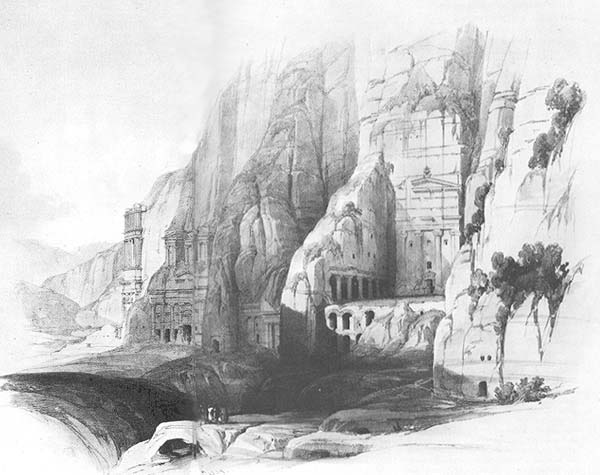Image Details

The Holy Land, David Roberts
“The Urn Tomb” by David Roberts, a famous early 19th century lithographer, faithfully renders the scale of the “Royal Tombs.” The “Royal Tombs” include the Urn Tomb, and to the left on the same cliff face, the Silk Tomb, the Corinthian Tomb and the Palace Tomb. These elaborate necropolis monuments were probably all carved within the first century. The interior of the Urn Tomb is a massive, unadorned single room, approximately 56 feet deep by 62 feet wide. The Silk Tomb received its name, not because of its architectural design, but because the brilliantly colored sandstone striations give the impression of moiré or watered silk. The Palace Tomb, so-named because of its resemblance to Emperor Nero’s Golden House, is a huge many-pillared edifice. One of the few buildings at Petra with three levels, it is the only tomb found whose height exceeds that of the cliff face from which it was carved. Consequently, part of the uppermost facade, which was higher than the cliff, was supplemented by masonry blocks.
